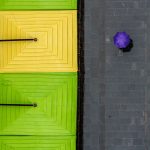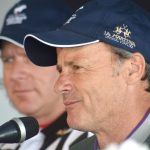The young doctor and director of the Rovinj ”Martin Horvat” hospital has won recognition in Finland, and his extensive research will be presented in May in Canada.
As Poslovni Dnevnik/Sergej Novosel Vučković writes on the 16th of February, 2018, Marinko Rade from Rovinj is not only a talented and successful young doctor, but in addition, the head of the hospital. He excells at both functions, as has been not only assumed by collective opinion, but confirmed as a fact after he was presented with a prestigious award.
Namely, after being recently proclaimed the best young scientist in the world, Rade won the American magazine’s Spine Young Investigator award twice, to add to his collection of accolades, the young doctor and director has just been awarded praiseworthy recognition from Finland as he was pronounced the winner of the annual award for the science of the Society for Physical and Physical Rehabilitation Medicine of the Finnish Medical Association.
“This is of special significance to our hospital in Rovinj,” stated Rade, who pointed out that this award was among the number one won in the maximal category among very well-established and well-known university professors and clinicians.
“It could be said that I beat my teacher and my mentor, Professor Olavi Airaksinen, but it’s true that without him, his advice, his patience, and his obvious faith in me and our ideas, there would be no awards either,” he noted.
The award was said to have been awarded for the results of intense scientific work. The study ”Normalisation of spinal cord displacement with the straight leg raise with resolution of sciatica in patients with lumbar intervertebral disc herniation: A 1.5 year follow-up study” where Rade and his associates demonstrated a significant association between the improvement of adaptive movements of the nerve roots and the spinal cord in the vertebral canal, and reduction of the symptoms of radiculopathy and acute pain.
“In 2013, after I proved that magnetic resonance imaging is a non-invasive measure for nerve movements in the vertebral canal, we, along with our associates, went on measuring and analysing for years, and proved that they’re consistent and that we can anticipate adaptation movements!
It seems that the nerves are trying to avoid compression and tension, which is logical as well. When we convey this information to the cause of patients with herniation of the intervertebral disk with compression n. ischiadicus, we’ve seen that we’re now able to answer the question: Why does what you see on the magnetic resonance (MRI scan) not always correspond with the status of the patient?” he explained, before going on to highlight the fact that sometimes you can get a poor picture.
The answer is, as he states, is that standard techniques don’t measure nerve mobility; the problem is often compression (seen with standard magnetic resonance imaging), but also in nerve tightening (standard magnetic resonance imaging doesn’t allow for the visualisation of this problem).
“We now know that, and most importantly, we now know how to measure it and test it,” he stated, explaining the demanding research that is being carried out by himself, six Finns, and one Australian at the Kuopio University Hospital and the University of Eastern Finland.
The full results of the research that saw him accept an elite prize will be presented in three months in Canada.
“It’s a long process that can be carried out at a University but not in a hospital where there’s people waiting on a waiting list. Our results are of a research nature, and we have to carry out several extensive clinical studies before being able to apply it all in practice, all for the safety of patients, we’re setting the path for a better future,” explained Rade.
When asked about his opinion on how the Croatian Government values this field of science, he stated “We always have to strive for better. The truth is there’s no money, but we’re a small and educated country, we should invest more in research and produce knowledge. It’s an investment in the future, of which we will only see the fruit in ten years, but it’s time to start working on it.”









